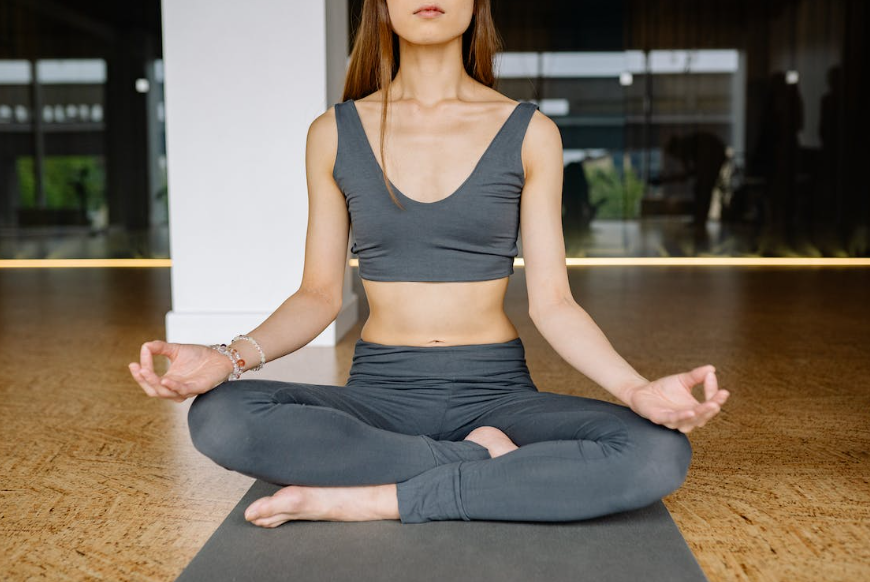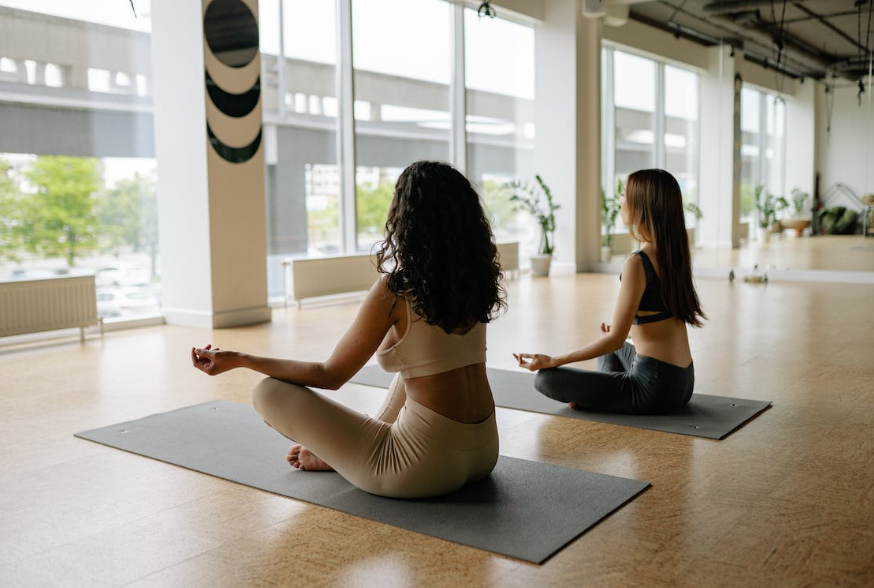Mindfulness Guided Meditation
Here, we offer basic tips to get you started on a path toward greater equanimity, acceptance and joy. Take a deep breath, and get ready to relax.

Selfpause Affirmation App
Download the app to get 1,000’s of affirmation meditations and everything you need to write, record and listen to your own.
A mindfulness guided meditation is a practice in which you focus on being in the present moment. There are many techniques you can use to help you achieve this. Some techniques include Dynamic Breathing, affirmations, and focusing on your breath. In this article, we’ll explore some of them. Hopefully, you’ll find one that works well for you.
Focusing on the present moment

Mindfulness meditation is a technique to calm and reduce stress by focusing on the present moment. It helps us become aware of the thoughts that cause us to feel anxious and to learn how to change our focus when they arise. By focusing on the present moment, we can reduce the stress and anxiety brought about by distractions.
During mindfulness meditation, you can practice focusing on the present moment and observing bodily sensations. You can also focus on the thoughts that enter your mind and swirl around your consciousness. Then, label the thoughts as they enter and leave your mind. Repeat this process several times throughout the day.
The present moment is a complex concept. It is neither infinite nor finite. It is only temporary. Various philosophers have attempted to define this state. Some have seen it as infinitely thin or deep, while others have seen it as non-existent. Nevertheless, the present moment is the one in which we observe our inner self.
Several studies show that mindfulness meditation improves psychological health and wellbeing. It can reduce psychological symptoms and reduce emotional reactivity. In addition, it can improve behavioral regulation. Nonetheless, more research is needed to clarify the directional relationships between mindfulness and psychological well-being. For now, research indicates that these two benefits can be derived from each other.
Using Dynamic Breathing

Using Dynamic Breathing for mindfulness-guided meditation is a great tool for reducing stress and anxiety. It combines active breathing exercises with gathas to bring the attention back to the present moment. This type of meditation also involves walking, which helps anchor awareness in the present moment.
As you practice mindfulness, you may notice that your attention wanders. This is completely normal. When you find yourself drifting, simply say in your head “I’m thinking/wandering” to bring your attention back to your breathing. It’s important to view this wandering mind as an opportunity to practice mindfulness, and not as a distraction.
If you’re looking for a free app to help you practice meditation, you can download Calm and try it right away. It’s designed to be easy to use and is suitable for beginners and experienced meditators alike. You can also try other breathing exercises in your daily life, such as belly breathing or yoga breathing.
The study included participants with three years of formal mindfulness-related meditation practice. These participants had completed at least three intensive meditation retreats. In addition, they had undergone a thorough screening for cardiovascular and mental disorders. The researchers excluded people with schizophrenia, bipolar disorder, or ADHD.
If you’re looking for a quick mindfulness exercise to do in the car, this can be a perfect choice. You can practice mindfulness while driving by stopping and breathing slowly. As long as you practice it regularly, it will reap similar benefits as a longer meditation. But it’s important to practice daily to reap the full benefits.
Using Dynamic Breathing for mindfulness is a great way to train your mind to focus on the present moment and avoid distraction. The meditative practice of mindfulness enables you to experience inner peace without stress and anxiety. It is also a great way to sleep better, as it helps you relax.
To begin practicing Dynamic Breathing for mindfulness guided meditation, you need to hold your right hand against your nose. Close the right nostril with your thumb. Next, close the left nostril with your pinky and ring fingers. Close the left nostril for a few seconds, and then repeat the process with the right nostril.
Using affirmations

Affirmations can help you feel important and loved. They help you visualize the reasons you love yourself. Using affirmations will not work for everyone, so you’ll want to experiment with different strategies and pay attention to your body’s signals. For example, it might not work for you if you are feeling stressed or overwhelmed.
There are many ways to use affirmations in meditation. One of the most popular methods is to use them while you lie down. People often play positive affirmation recordings while drifting off to sleep. During this state of relaxation, your subconscious mind is more open to affirmations and assimilating them on a deep level.
In a guided meditation, you practice your affirmations while focusing on your breathing. Practice using deep, soothing breathing. Try not to let negative feelings distract you; instead, focus your attention on the affirmation you are saying. With time, the affirmations will become second nature. This can be especially helpful for people who are depressed.
Affirmations are powerful positive statements you repeat to yourself in order to make positive changes in your life. However, it is essential to make sure you believe these statements before you start using them. Otherwise, you will not experience the results you want. In a mindfulness meditation, affirmations can help you connect your mind and body and help you achieve peace.
Using affirmations can also help you improve your self-confidence. They are helpful for coping with difficult situations and improving your performance. In the same way, positive affirmations can help you develop your resilience and improve your creativity. They can also help you cope with traumatic situations. When practiced properly, affirmations can significantly impact your perspective and make it easier to reach goals.
You can also try listening to a motivational affirmation audiobook. There are hundreds of them available on Amazon. Listening to these positive affirmations will help you shift your attitude away from negative thoughts and encourage a more positive attitude. It can be helpful to use a positive affirmation every day.
Our Top FAQ's
Mindfulness meditation is a type of meditation that involves focusing your attention on the present moment and bringing awareness to your thoughts, feelings, and sensations. It is different from other types of meditation, such as mantra meditation or visualization meditation, which involve repeating a specific phrase or visualizing a specific image, respectively.
To get started with mindfulness meditation, find a quiet, comfortable place to sit or lie down. You can sit in a chair with your feet planted on the ground or on a cushion on the floor with your back straight. Close your eyes and take a few deep breaths. Then, bring your attention to your breath, noticing the sensation of the air as it enters and exits your body. Whenever your mind wanders, gently redirect your attention back to your breath. You can start with a short session, such as 5-10 minutes, and gradually increase the length of your practice as you become more comfortable.
Some tips for maintaining focus during mindfulness meditation include:
- Setting aside a specific time for your meditation practice each day to help establish a consistent routine
- Choosing a specific object of focus, such as your breath or a mantra, and bringing your attention back to it whenever it wanders
- Not getting too attached to any particular thought or emotion that arises during your meditation, but rather observing it with a sense of curiosity and non-judgment
- Being patient with yourself and not getting frustrated if your mind wanders frequently at first
To incorporate mindfulness meditation into your daily routine, you can try setting aside a specific time each day for your practice, such as first thing in the morning or right before bed. You can also try incorporating mindfulness into your daily activities, such as by paying attention to your breath while you brush your teeth or walk to work.
There are generally no risks or drawbacks to practicing mindfulness meditation, as it is a safe and natural way to calm the mind and reduce stress. However, it is always a good idea to consult with a healthcare provider if you have any concerns about starting a meditation practice.
